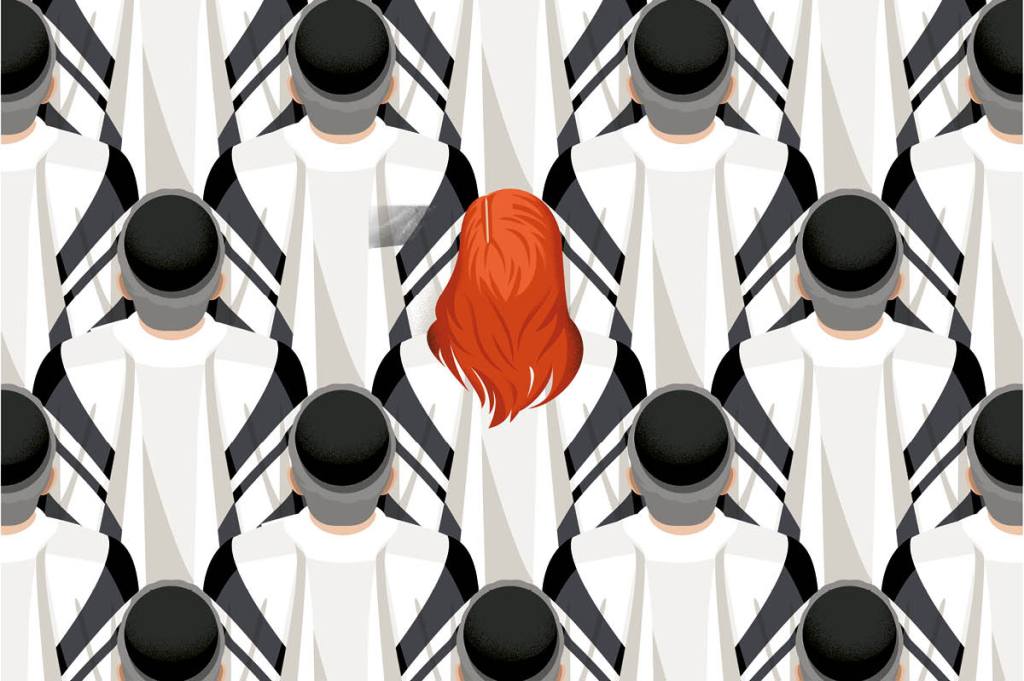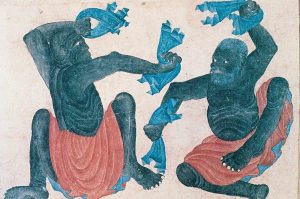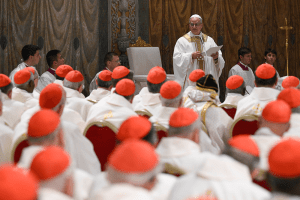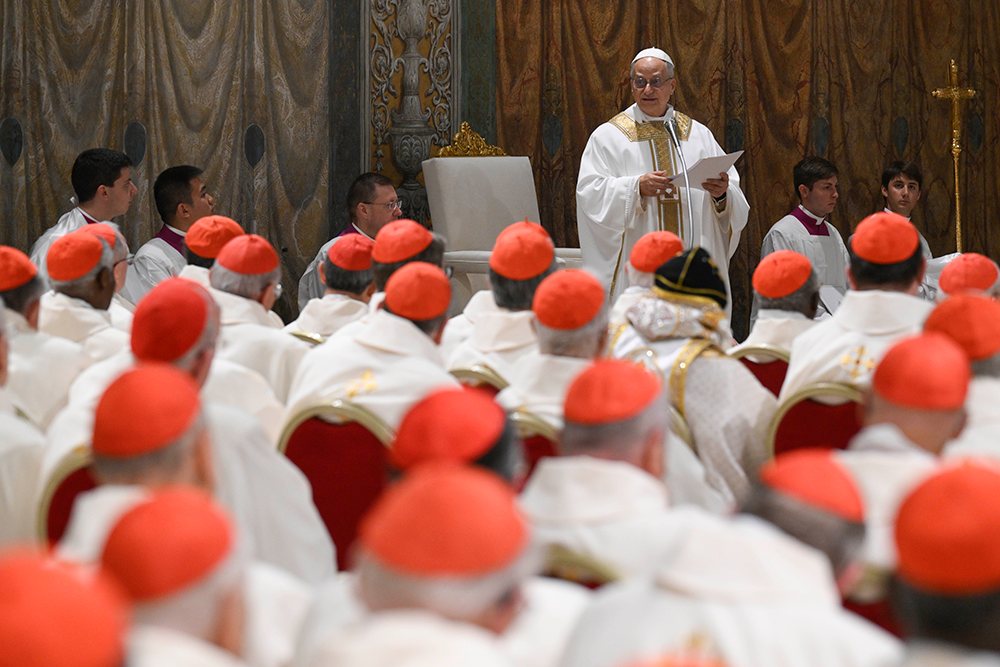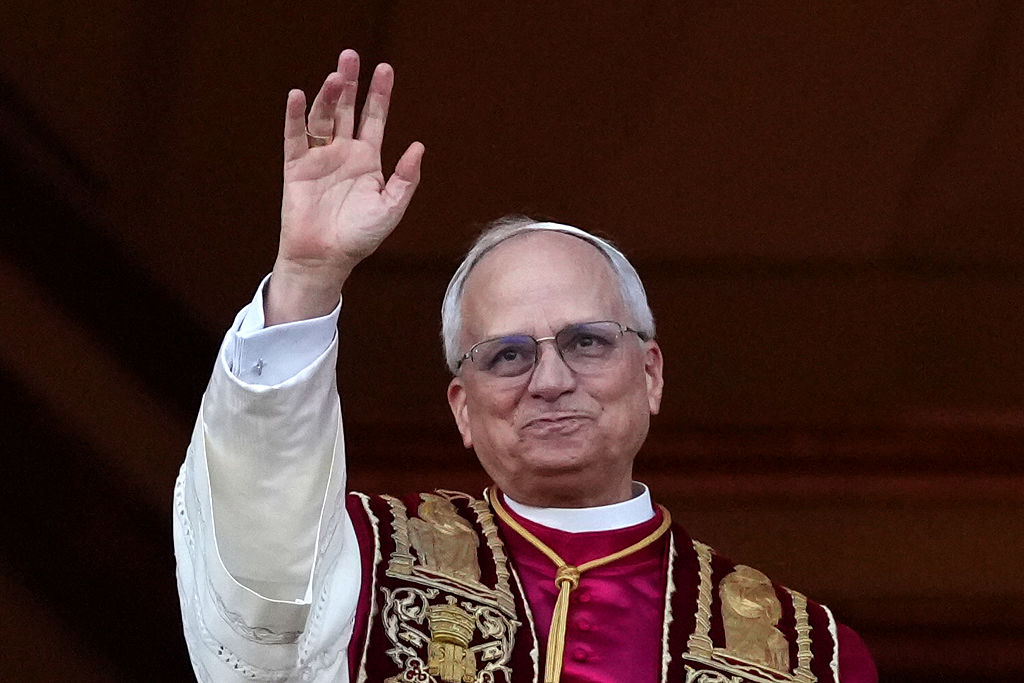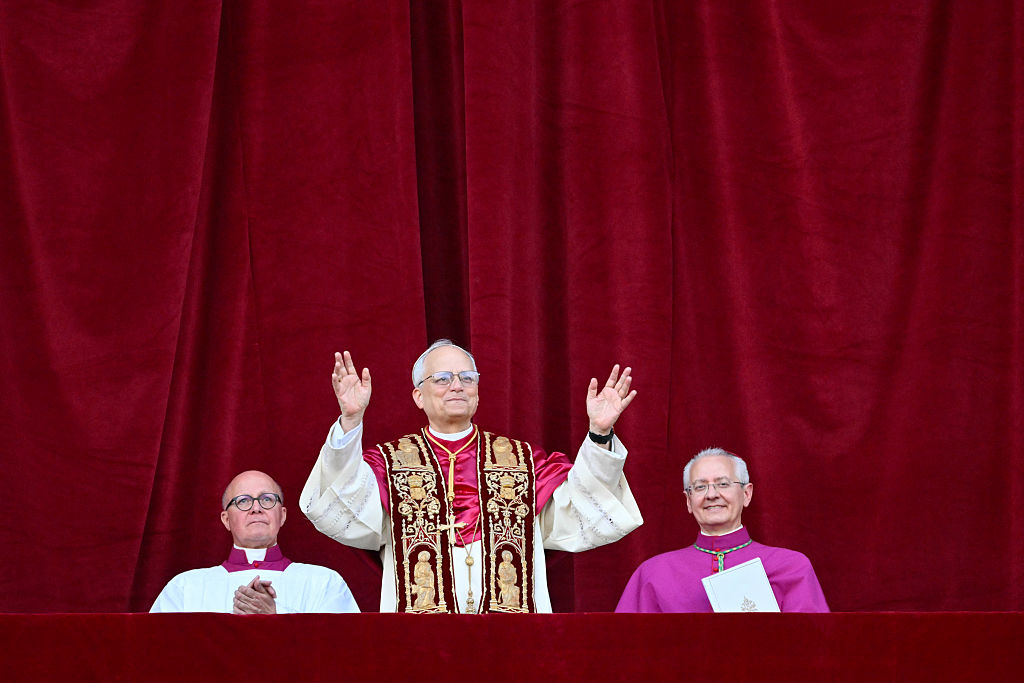Bracha Jaffe, an American-Israeli, spent decades working in tech, focusing on software development and raising her family in Israel. But following a midlife career shift and a move to New York, she now also works as an assistant rabbi at the Hebrew Institute of Riverdale, a large Orthodox synagogue in the Bronx. Every day, she plays a key role guiding congregants during life cycle events, such as births and deaths. She teaches classes and visits the sick.
“I think it’s still true that when someone says ‘Rabbi,’ what comes to mind is an older male, perhaps with a white beard,” she says. With her blonde bob, ever-present smile and warm demeanor, Jaffe is a far cry from this stereotype. She is one of the faces of perhaps the most contentious changes within Orthodox Judaism: the ordination of women as rabbis.
In 2023, there are approximately 100 women who are ordained as Orthodox rabbis. The movement to ordain Orthodox women is highly contentious and is rejected by other mainstream Orthodox Jewish groups. The push to create Orthodox women rabbis started when Rabbi Avi Weiss, well known for his efforts to help Jews escape from behind the Iron Curtain during the Cold War, ordained Sara Hurwitz in 2009. Weiss coined the term “Open Orthodox” to describe the movement he was building, which indicated an intellectual openness to Jewish law, with a greater emphasis on the role of women.
The decision to ordain women as rabbis was something that Weiss had been thinking about for many years. “There is no halachic [Jewish legal] barrier that would prevent women from becoming rabbis. The issue is more sociological and a matter of public policy,” he explained.
Since 1999, Weiss had been running a male rabbinic ordination program called Yeshivat Chovevei Torah and had an aim to ordain Orthodox men with a more open and tolerant world view to counter a growing feeling that modern Orthodoxy has become more closed and intolerant. Weiss’s male rabbinical school had been subject to much controversy from other Orthodox groups, with the New York Times article covering the ordination of his first class in 2004. Weiss had a long-standing desire to ordain women, but, as he explained to me, he had to wait until the right candidate made herself available to start his program.
“The dream became more real when meeting Rabba Sara Hurwitz and recognizing that she had all the attributes to be the first — [she was] a talmida chachama [a scholar in Jewish text], with great understanding of the human condition, and with an unbelievable koach hatzimtzum [the power of contraction, i.e., humility], the ability, even in the face of torrential criticism, to step back and remain calm, and keep an eye on what matters most.”
The opportunity to become the first ordained Orthodox female rabbi was deeply appealing to Hurwitz. “Growing up in South Africa, I never experienced that ‘aha’ moment where I dreamed of becoming a rabbi. There were simply no female rabbinic role models. It never occurred to me that pursuing the rabbinate was an option. As I was finishing high school and searching for my purpose, my parents suggested that I take a vocational test to see where my passion lay,” she said. The results of her test showed that she was best suited for a role in clergy. “We laughed. The notion of a young Orthodox woman becoming a rabbi? It just didn’t exist! But from a young age, I was drawn to the song, warmth and community of synagogue,” she says.
In 2005 Hurwitz began studying a four-year program under Weiss’s tutelage. While it was not clear what her title would be, or what role she would formally occupy, it was a watershed moment for any Orthodox group, even Weiss’s more liberal-minded Open Orthodox movement. For four years Hurwitz studied a rigorous curriculum that mirrors men’s ordination programs including the laws of Sabbath, the intricate details surrounding the laws of Kosher, mourning and death, family life and conversion.
When she completed her studies, in 2009, Weiss ordained Hurwitz in a public ceremony and conferred on her the title maharat, an acronym he coined which means “leader of Jewish law, spirituality and Torah.” It was a fitting acronym, denoting spiritual leadership, and in keeping with a tradition of creating acronyms within Judaism for persons of historical significance. Wanting to clarify Hurwitz’s role as a rabbi, Weiss also conferred the feminine title of rabbi, using the title “Rabba.”
The decision to confer rabbinic ordination on a woman triggered apoplectic criticism from other Orthodox Jewish groups, who did not buy into Weiss’s movement. Agudath Israel of America, one of American’s largest rabbinical bodies, dismissed the ordination as being outside the confines of Orthodox Judaism. Another important rabbinic body, the Rabbinical Council of America, released statements confirming its opposition to women’s ordination, noting: “These developments represent a radical and dangerous departure from Jewish tradition… and must be condemned in the strongest terms. Any congregation with a woman in a rabbinical position of any sort cannot be considered Orthodox.”
Despite the condemnation, Hurwitz and Weiss refused to back down. Instead they teamed up to start a rabbinical school that would continue to ordain Orthodox women, Yeshivat Maharat. In 2013, Yeshivat Maharat ordained its first class of three rabbis, with a new cohort finishing each year since.
While Weiss understands why there is apprehension about changes within the Orthodox tradition, he says that he thinks much of the sometimes vicious criticism the seminary has encountered has been unfair. “In my mind, nothing justifies the level of abuse, especially bearing in mind that none of our critics ever visited Yeshivat Maharat,” he explained to me.
In Orthodox Judaism, most leadership is the domain of men. The women who are ordained through Yeshivat Maharat occupy a nuanced position in Jewish law. They do not count toward a minyan, or prayer quorum, and cannot occupy a position as a witness in a Jewish court of law. These roles are clearly forbidden for women in Orthodoxy. However, the argument of those in favor of Orthodox female ordination is that a rabbi does not need to fill these gender-specific roles. Rather, a rabbi’s is a position of leadership, education and knowledge.
“If ordination were about pure expertise in Jewish law, there is no reason women could not be ordained, as we have no reason to think women cannot become Jewish law experts and Jewish law welcomes such experts,” says Rabbi Michael Broyde, a former dayan [rabbinic judge] and professor of law and the academic director of the law and religion program at Emory University School of Law.
Broyde, who is not involved with Yeshivat Maharat, notes that in Judaism men have traditionally held almost all of the leader- ship roles related to ritual. “Most ritual leadership has customarily been limited to men and change needs to be implemented care- fully and slowly for the sake of communal unity and to make sure it actually works,” he said. His caution is common among Orthodox Jews, who are unsure about the ongoing ramifications of ordaining Orthodox women.
Broyde, who has written about the ordination of Orthodox women in scholarly journals, compared the radical shift in tradition to dental work. “Change in Orthodoxy is a lot like orthodontics. To move teeth, you have to apply small amounts of pressure over great periods of time. Lots of pressure over small periods of time does not move teeth but breaks them. So too with the Orthodox community: slow change produces positive developments, while large movements break us apart. I do not want to break apart over this issue, whatever my feelings are personally,” he said.
To date, Yeshivat Maharat has had sixty-four graduates from its rabbinical school. They come from across the world, and are out in the field serving in pulpits, as chaplains, as educators and leaders. At a time when many rabbinical schools are struggling with enrollments and closing campuses, Yeshivat Maharat is growing rapidly. “Maharat is an exception — just last year accepting thirty-three new students. It’s a dream come true,” said Weiss.
In addition to Maharat, there are now several other institutions which prepare women for ordination in Israel, resulting in a pipeline of newly educated Orthodox women in leadership including in synagogues, education or as chaplains. Like Yeshivat Maharat, the programs in Israel are subject to plenty of controversy and fierce pushback from other orthodox groups, with a lack of recognition from Israel’s state-run rabbinic courts. And yet, like Maharat, despite the controversy, there is no shortage of women wanting to enroll and study in these programs, with the numbers growing year on year.
The ordination of Orthodox women in Judaism is personal for me. I was born into an Australian Jewish family with a deep love of tradition and Judaism. My childhood was steeped in reverence for Jewish law and the beauty inherent in Orthodox Judaism. My family attended synagogue weekly, adhered to strict laws of kosher and kept the Sabbath.
If I had been born male, there is no doubt I would have chosen to be a rabbi like other members of my family. And yet, despite my wanting to study Torah, there were no opportunities for women in Australia to study at the levels I was seeking.
I watched the furor over Maharat from afar and, after many years of deliberation, I enrolled in the ordination program and became the first Australian woman to complete the four-year rabbinic ordination program. I joined women from around the world: women like me, who if given the opportunity would have done rabbinic training years ago.
My motivations were straightforward enough: I wanted to sit and study Torah. Yet because ordaining Orthodox women is so contentious, there is something strange knowing that my pursuit of excellence in Jewish texts is seen as deeply heretical by some sections of my community. In Australia, there is no Open Orthodox movement. I was raised in a Chabad Hasidic family, and yet, because Maharat is one of the only institutions in the world that is ordaining women, the students at Maharat are from diverse backgrounds, including ultra-Orthodox and Hasidic communities. We came to Maharat from around the globe because we wanted to learn and study Torah without gatekeeping. We wanted academic rigor and commitment. Maharat does not charge tuition, providing all women with a generous stipend, one-on-one tutoring and a deep commitment to increasing their excellence in Torah study.
When I spoke to Hurwitz about my experience of the accusations that women who become Orthodox rabbis face, she could relate. She recounted a story from early in her career: “One day, I received a phone call. I picked up the phone, and the male voice on the other end said abruptly ‘you are destro ing the Orthodox community’ before hanging up. I was devastated. I did not want to be a destroyer. I wanted to teach and lead and offer spiritual and pastoral guidance to my congregants. I wanted to support them through their lows and celebrate their highs. And more than anything, I wanted to build an institution, a place where all Orthodox women could pursue a credentialed pathway toward ordination.”
In an age where fewer people are inclined to be religious, join a congregation, pray, study religious texts or be a part of a close-knit community, the women who are flocking to Yeshivat Maharat to study Torah have tremendous impact on their communities.
It is part of the reason I wanted to join the first group of Orthodox women to be ordained: if no one is brave enough to go first, why would other women see it as possible for themselves?
“Today, [the Jewish people] is searching for meaning, searching for spirituality, searching for God. We need rabbis who can show the way. The women who have received semicha [ordination] from Yeshivat Maharat have done just that,” says Weiss.
For now, there is no doubt what Hurwitz would like to see in the future. “In ten years, I hope that Orthodox women’s semicha is a normalized phenomenon, and that Maharat continues to be seen as an innovative training ground… that meets the needs of modern-day Jewry, and that the global Jewish community looks to Maharat as a bastion of Jewish education and progressive Orthodox ideals.”
While acceptance of Orthodox women rabbis is still fraught inside some communities, there are some which have hired female clergy, reflecting a growing tolerance of women in leadership roles.
Reflecting on her work at the Hebrew Institute of Riverdale, Rabbanit Bracha Jaffe notes, “so many times I have heard ‘having a female clergy presence has changed the feeling on the women’s side [of the synagogue, in which men and women sit separately].’ Having your rabbi give you a hug and connect with you in shul is so important,” she noted. “What congregants see very well is the pastoral role, the teaching role, the place to go to with questions.”
This article was originally published in The Spectator’s September 2023 World edition.



